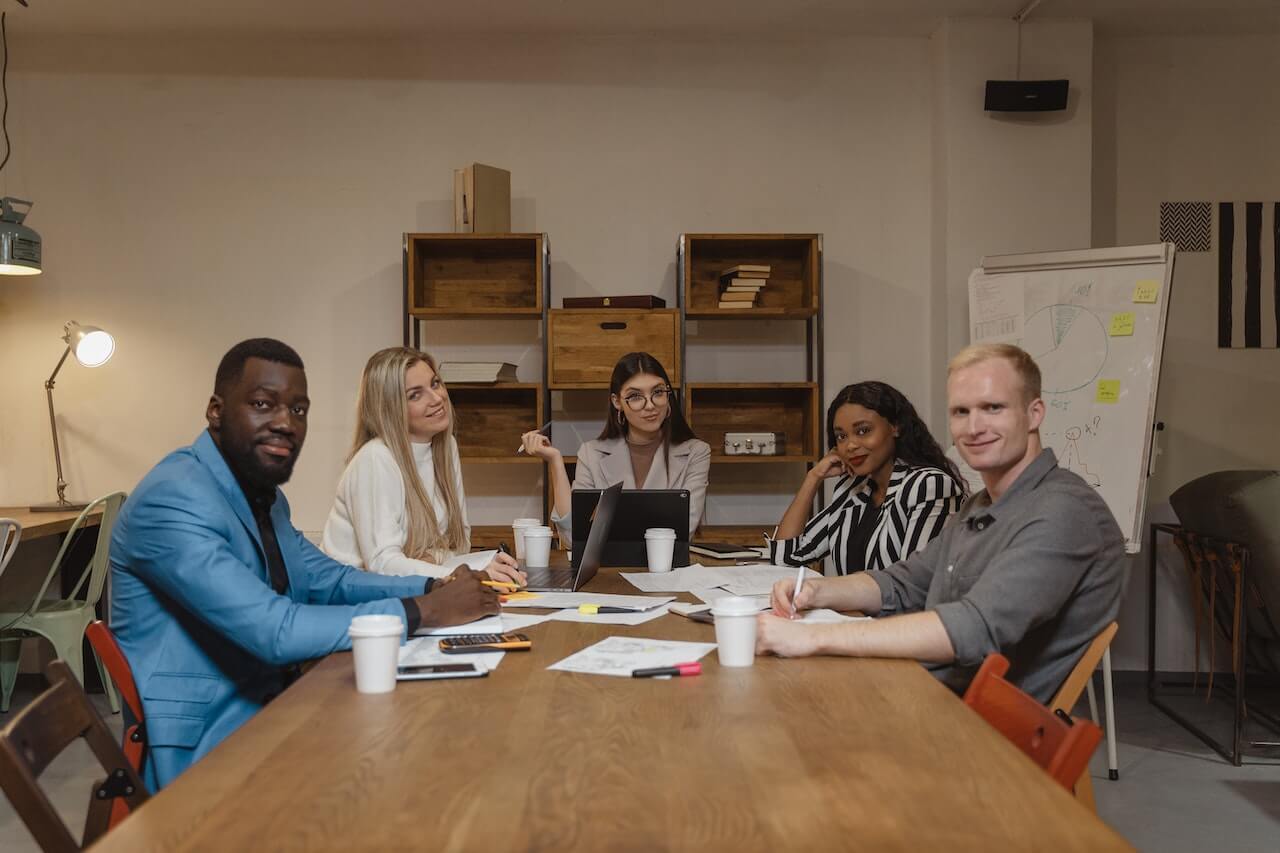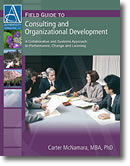How to Change Organizational Culture
© Copyright Carter McNamara, MBA, PhD, Authenticity Consulting, LLC.
The focus of this topic is to acquaint the reader with the broad principles and approaches in changing the culture of an organization, including whether it is a team, departmental unit or the overall organization.
The information in those topics is not sufficient to develop competencies in changing organizational culture. Those competencies comes from extensive
experience in applying those types of information.
Strongly Suggested Pre-Reading
Guidelines, Methods and Resources for Organizational Change Agents
Sections of This Topic Include
- What is Organizational Culture?
- How to Change Organizational Culture
- Various Models to Guide the Change
- Additional Perspectives on Changing Organizational Culture
Also consider
What is Organizational Culture?
Basically, organizational culture is the personality of the organization. Culture is comprised of the assumptions, values, norms and tangible signs (artifacts) of organization members and their behaviors. Members of an organization soon come to sense the particular culture of an organization. Culture is one of those terms that’s difficult to express distinctly, but everyone knows it when they sense it. For example, the culture of a large, for-profit corporation is quite different than that of a hospital which is quite different than that of a university. You can tell the culture of an organization by looking at the arrangement of furniture, what they brag about, what members wear, etc. — similar to what you can use to get a feeling about someone’s personality.
Corporate culture can be looked at as a system. Inputs include feedback from, e.g., society, professions, laws, stories, heroes, values on competition or service, etc. The process is based on our assumptions, values and norms, e.g., our values on money, time, facilities, space and people. Outputs or effects of our culture are, e.g., organizational behaviors, technologies, strategies, image, products, services, appearance, etc.
The concept of culture is particularly important when attempting to manage organization-wide change. Practitioners are coming to realize that, despite the best-laid plans, organizational change must include not only changing structures and processes, but also changing the corporate culture as well.
How to Change Organizational Culture
Cultural change is a form of transformational organizational change, which is is a radical and fundamental shift in the way the entire organization operates. It is also classified as a strategic intervention, which is particularly helpful in situations where, for example, there are rapid changes in the external environment, significantly increased competition, rapid expansion of markets, a likely merger or acquisition, and/or need for a comprehensive change throughout the organization.
The complete and careful guidelines to change the culture of an organization are the same as those explained in the suggested pre-reading: Guidelines, Methods and Resources for Organizational Change Agents
However, those guidelines are embellished with various perspectives on how to change the culture in an organization. See Additional Perspectives on Changing Organizational Culture below.
Various Models to Guide the Change
| See a video about models for change, roles during change, interventions, how choose them and principles for changing systems. From the Consultants Development Institute. |
The purposes of an organizational change model are to 1) provide guidance to leaders of the change effort and 2) give a common perspective and frame of reference for participants when communicating about their change effort. The following paragraphs provide a general overview of some of the more prominent change models. The purpose of the overviews is to increase your general knowledge about approaches to change and help you grasp the diversity of approaches. The overviews are not intended to provide you detailed guidelines about implementing any of the models.
Note that there are many other change models, many of them formed by modifying the well-known models, such as Kurt Lewin’s action research. Also note that, because there is no standard definition for a change model, some readers might consider some of the following to be standard management practices, rather than means to affect change.
Unfreeze, Move, Refreeze
Lewin’s model is probably the most well known. Its simple, but powerful, premise is that to change a system, you first have to “unfreeze,” or loosen up those structures and influences that currently hold the system together. Without attention to those factors, the actions to accomplish desired changes are not likely to be successful because they will continue to encounter strong resistance from members of the organization.
Structures can be loosened in a variety of ways. The means mentioned in the above section Requirements for Successful Organizational Change about motivating change and creating a vision are powerful for unfreezing an organization. The next general phase in this model is about moving the change along, including by developing political support as described in the above section. The final phase is about developing and implementing new structures, such as new plans, policies and procedures, which freeze, or hold, the current state of change in place. The means mentioned in the above section about managing the transition and sustaining momentum would be very useful in refreezing the intended changes.
Lewin’s 3-Stage Model of Change
Action Research
Lewin’s action research model is based on an overall cycle of 1) clarifying the current problem in the system, 2) involving a specialist or consultant, 3) gathering data and diagnosing the situation, 4) providing feedback to people in the system, 5) incorporating members’ feedback to further clarify the problem and its causes, 6) developing action plans to address the problem, 7) taking those actions and 8) gathering data to assess the effects on the problem. The cycle can also generate tremendous learning for those involved.
Many models for consulting are based on action research and include various modifications. They include, for example, more involvement of members of the organization in the process, and less focus on “diagnosis” and more focus on joint discovery. There is also more focus on strengths and opportunities and less on weaknesses and problems, as well as more focus on learning.
Business Process Reengineering (BPR)
This method aims to increase organizational performance by radically re-designing the organization’s structures and processes — by starting over from the ground up. As with any major model for change, there are many proponents and opponents of BPR. BPR can require an extensive amount of detail, attention and time and can be quite demanding on employees.
Still, the process might be one of few that provides clear guidelines and procedures for carefully dissembling and assembling an organization. The model, like Future Search Conference (below) and Whole Systems Change, really forces leaders to take a complete, fresh look at systems in their organization and how to re-develop those systems anew.
Business Process Re-Engineering
Future Search Conference
Marvin Weisbord developed the future search approach, which can involve 30-100 people or more, usually over three days, to articulate a preferred future and develop the action steps to accomplish that future. It is an example of a relatively recent category of change models called large-scale interventions. Large-scale change is an example of transformational, organization-wide change.
In the approach, a consultant works with a small planning group to design the event. All key internal and external stakeholders are encouraged to attend. Participants examine the past, present and future of the organization from the perspective of the participants themselves, the organization and its industry. Participants discover their shared values and assumptions to clarify a preferred future or vision. The vision emerges from various scenarios, built from considering what has worked and what has not worked in the past — but especially what has worked. Short-term and long-term action plans are established. Emphasis is on building to the desired future, rather than on solving problems.
Future Search Conference in Theory and Practice
McKinsey 7S Model
The model was developed by Watermann and Peters and depicts seven dimensions of organizations that must be considered when accomplishing organizational change. Imagine a circle of six circles with one circle in the middle. The middle circle is labeled “shared values.” Shared values represent the overall priorities in how the organization chooses to operate. The six outer circles include “strategy,” “structure,” “systems,” “skills,” “staff” and “style.” The point of the model is that an effective organization has to accomplish a fit between all seven S’s, and to realize that a change in any one of the seven dimensions will effect a change in all others.
Strategy is the overall direction of the organization and how it is going to follow that direction. Structure is the organization of the company, defining its roles and lines of authority. Systems include the processes and procedures that guide day-to-day activities in the organization. These three are the hard S’s.
Skills are the capabilities of the organization. Staff includes the organization’s people and how their expertise is utilized. Style is how the organization is led. These three are the soft S’s.
Various Additional Models
- Examples of Organizational Performance Management Systems
- Strategic Management (systematic, explicit implementation of a strategic plan)
- Plan Do Check Act (this approach also is quite common)
- Lewin’s Freeze Phases
- McKinsey 7S Model
- Kotter 8-Step Model
- Bridge’s Transition Model
- Embedding Adaptive Change
- Prosci ADKAR
Additional Perspectives on Changing Organizational Culture
- How Do You Change An Organizational Culture?
- How Do You Change Organizational Culture?
- Changing Company Culture Requires a Movement, Not a Mandate
- Signs Your Company Needs a Change in Culture
- How To Change Your Organizational Culture
- 10 Principles of Organizational Culture
- Changing an Organization’s Culture, Without Resistance or Blame
- Why is Organizational Culture Change Difficult?
- 8 Critical Change Management Models to Evolve and Survive
- The 9 Clear Steps to Organizational Culture Change
- Adjusting to Changing Organization Culture
- Organizational Culture Change Models
- Organizational Culture Model by Edgar Schein
- A Simple Model of Culture Change
Also See These Closely Related Topics
- Organizational Behavior
- Overview of the Field of Organization Development
- Organizational Performance Management
Learn More in the Library’s Blogs Related to Organizational Change
In addition to the articles on this current page, see the following blogs which have posts related to Organizational Change. Scan down the blog’s page to see various posts. Also see the section “Recent Blog Posts” in the sidebar of the blog or click on “next” near the bottom of a post in the blog.
- Library’s Consulting and Organizational Development Blog
- Library’s Leadership Blog
- Library’s Supervision Blog
Additional Library Resources in the Category of Organizational
Change and Development
 Sections of this topic
Sections of this topic

















